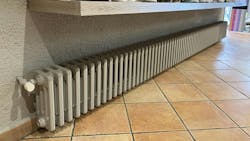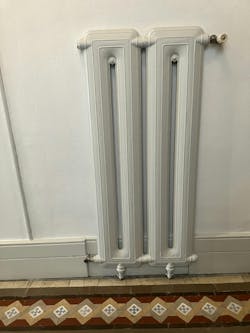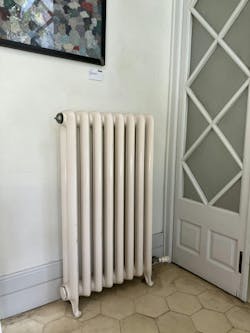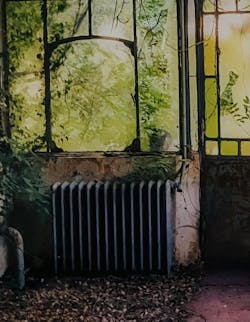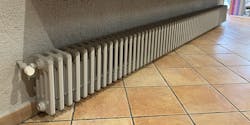For the second year in a row, my wife and I travelled in Europe. This year we were in Spain for two weeks. The weather was nice, sorta like San Diego. The food was great, lots of interesting dishes. The places we stayed were excellent, with very friendly and helpful staff. If only the airline didn’t delay the arrival of our luggage for two and a half days.
We started the trip with four days in Barcelona, exploring the city and shopping for shoes. We then rented a Tesla and spent three days in the Pyrenees, driving around to the tiny tax-free country of Andorra, to the sprawling city of Toulouse in France, and to the fairy tale village of Puigcerda in Spain, shopping for shoes.
We finished the trip with four days on the island of Majorca in the middle of the crystal-clear Mediterranean Sea, again shopping for shoes. The highlight of that leg of the trip was a five-hour catamaran voyage with seventy drunk Europeans, including both a bachelor and a bachelorette party. I’ll never again hear the Momma Mia song without remembering the crew and the ladies dancing it up.
Very Different Missions
My wife’s mission was finding just the right shoes that were made in Spain. I think she ended up buying five pairs for herself and one pair for our granddaughter. Full disclosure, I bought one pair. But since I’m a hydronic geek, my mission was to find out how they heat buildings on the other side of the Atlantic. I found five examples of cast iron hot water radiators.
We checked in to our Bed & Breakfast in Barcelona the first day, without our luggage. We both had the one change of clothes they recommend in our carry-ons, but not our toiletries. It turns out that I can miss a day or two of shaving, but my wife can’t be without her stuff for long. We did shop for some things other than shoes.
The nice guy at the desk explained that our room was in the building next door. So off we go down the steps, through the lobby, take the sidewalk to the right, through another lobby, and up three floors in an antique elevator.
Let’s Talk Radiators…
The radiator in photo A was in the hallway leading to our room. I hadn’t seen this style cast iron radiator in my forty years of looking at cast iron radiators. It was perfect for a hallway because it only stood off the wall about two inches. A flat cast iron radiator before there were flat panel steel radiators. Please notice the beautiful tile floor. Tile floors were everywhere and always interesting.
The B&B was in apartment building built in the 1920’s. Our room had a column style cast iron radiator from that era, similar to the radiator in photo B. It was in the other building, on the terrace where we had our breakfast every morning. Like most radiators in Europe, it has a thermostatic actuated radiator valve.
The valve regulates the flow of hot water into the radiator to maintain the room temperature at the setpoint on the dial of the actuator. Europeans like the comfort and savings that these valves provide. I’ve found that most Americans are not that interested. In the Midwest market, not many radiators get this upgrade.
What interested me about this radiator was how they do the manual air vent. The end sections of the radiator do not have the boss cast into the section to drill and tap for an air vent. American radiators almost always have that. I guess the Europeans like to use a bunch of bushings to install the manual vent.
The radiator in photo C was hanging over the fireplace in the hotel we stayed at in the Pyrenees. Actually, it was a picture of a greenhouse that used to be on the property. This place was built in 1910 as a summer home, then repurposed as a luxury hotel twenty years ago. My wife and I were spoiled by this place. I can’t imagine a hotel being nicer. In fact, when we got to our five-star hotel in Majorca, it seemed like a complete letdown.
And More Radiators…
The radiators in photos D and E were in shoe stores (imagine that) in the nearby village of Puigcerda. This is up in the mountains near some major ski resorts, so it must get cold in the winter. The radiator in photo d is about the longest radiator I can remember. It has seventy sections!
It has the thermostatic valve on the supply end, and a regular union elbow on the return. These type of valves have to be on the supply side because of the internal construction. If the water flows through it the wrong way, it chatters as it closes.
The radiator in photo E only has 26 sections, but unlike the 70-section radiator where the supply and return are on opposite sides of the radiator, the connections are through one valve on the same side. I’m not sure what magic is going on to get that radiator to heat end to end, maybe a long horizontal dip tube.
…And One Radiator-Free Island
I did not find any cast iron radiators or panel radiators on the island of Majorca, which has a very temperate climate. Our modern hotel room had the typical forced air system, and light switches that I had to ask at the front desk how to turn off. The answer was too obvious to share, or you’ll think I’m a dolt.
There were a couple of things like that to remind you that you weren’t at home. My phone was the remote control for watching Netflix in the room; that fact was only apparent after two visits to the room by the nice lady at the front desk. I’m glad I only travel once a year, my PTET was kicking in.
Patrick Linhardt is a forty-year veteran of the wholesale side of the hydronic industry who has been designing and troubleshooting steam and hot water heating systems, pumps and controls on an almost daily basis. An educator and author, he is currently Hydronic Manager at the Corken Steel Products Co.
About the Author
Patrick Linhardt
Patrick Linhardt is a forty-one-year veteran of the wholesale side of the hydronic industry who has been designing and troubleshooting steam and hot water heating systems, pumps and controls on an almost daily basis. An educator and author, he is currently Hydronic Manager at the Corken Steel Products Co.
